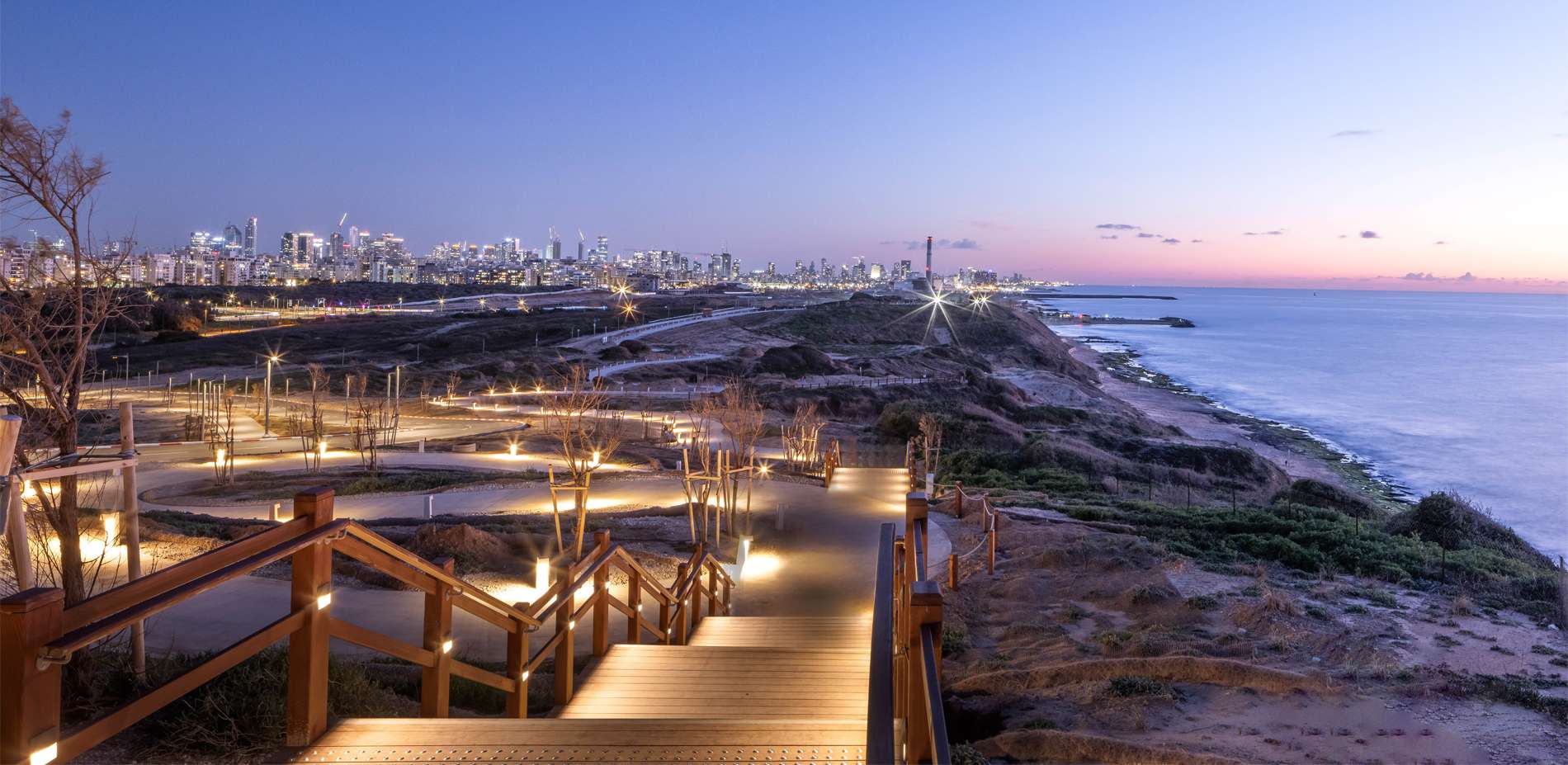
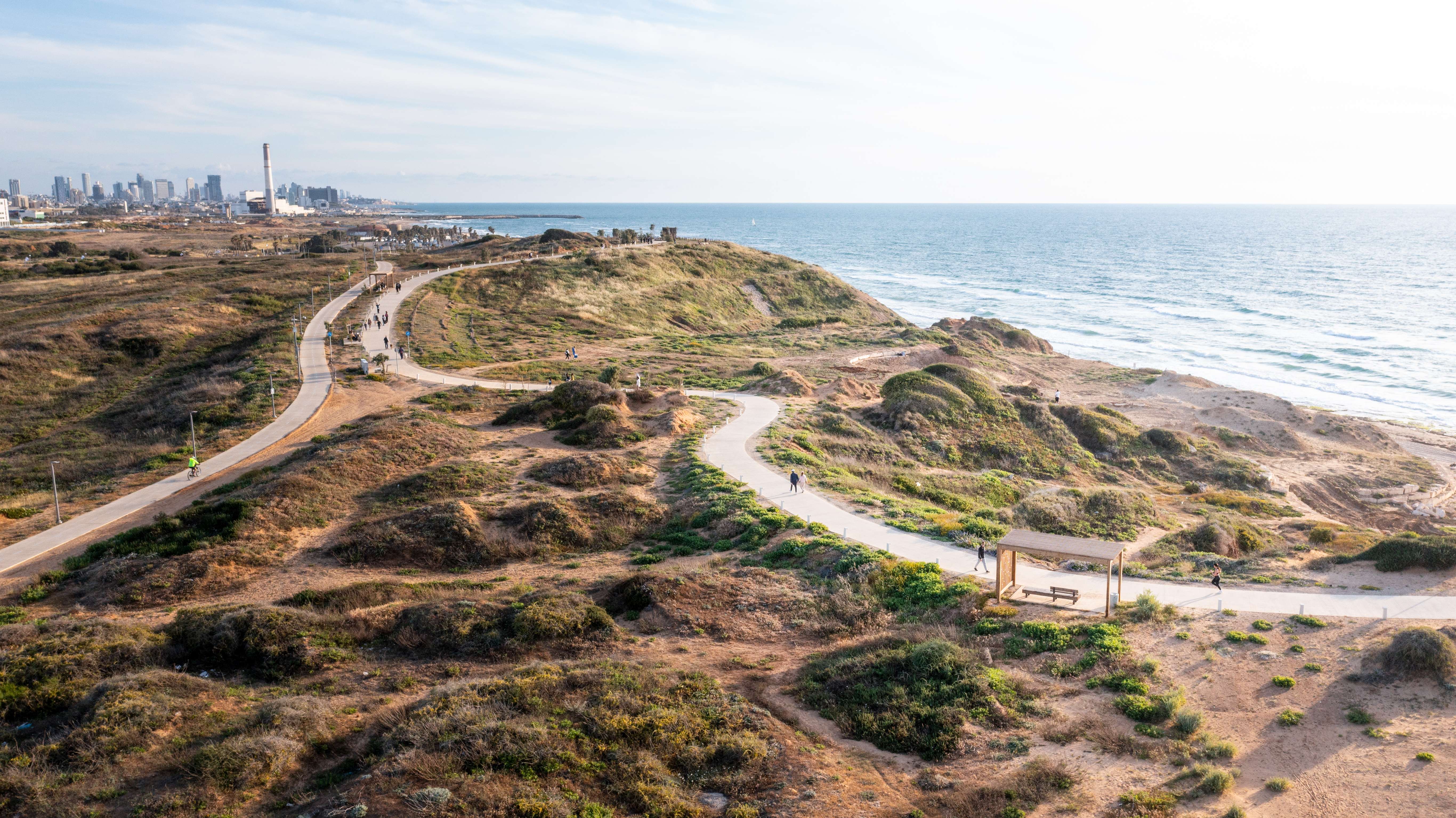

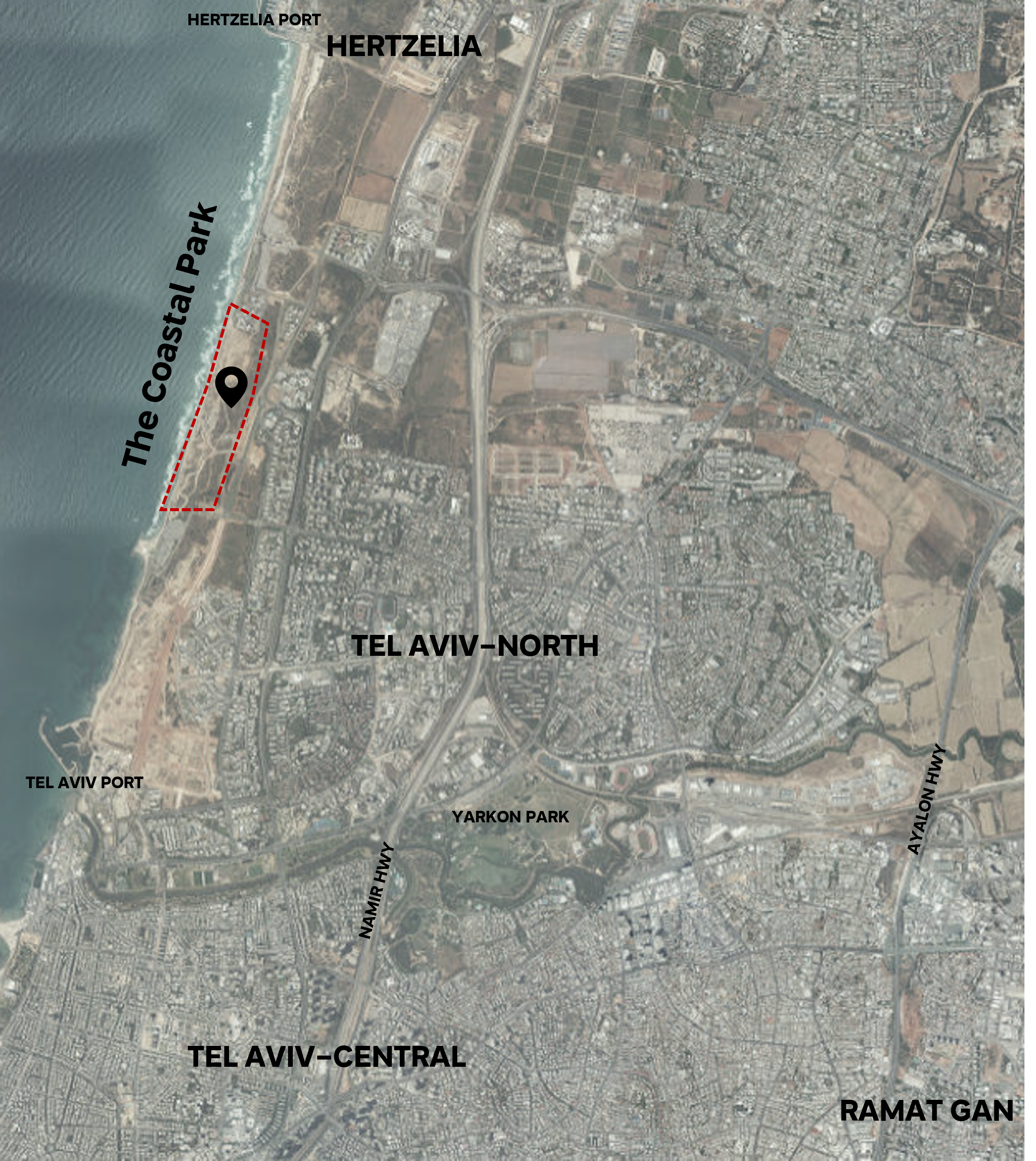

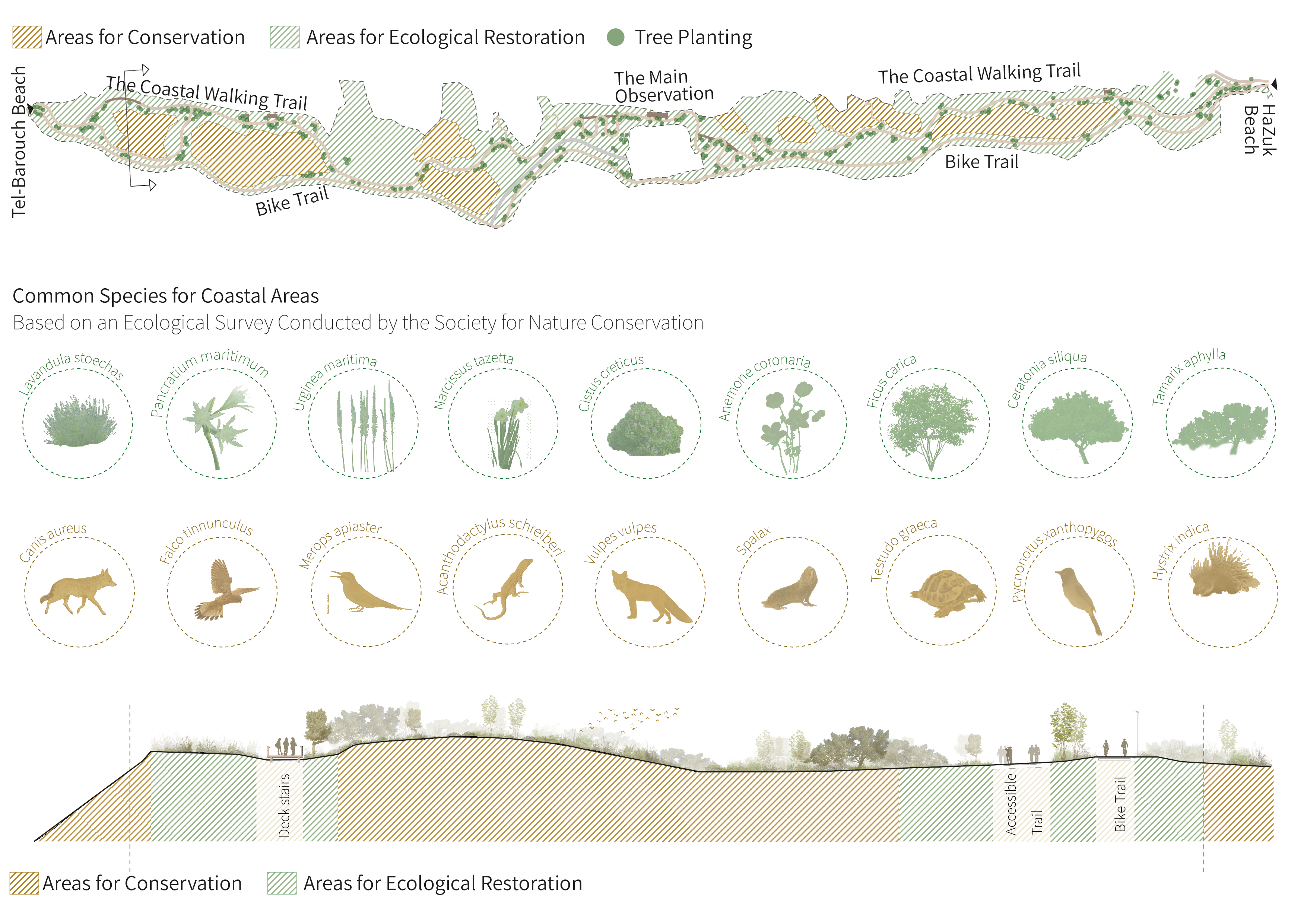
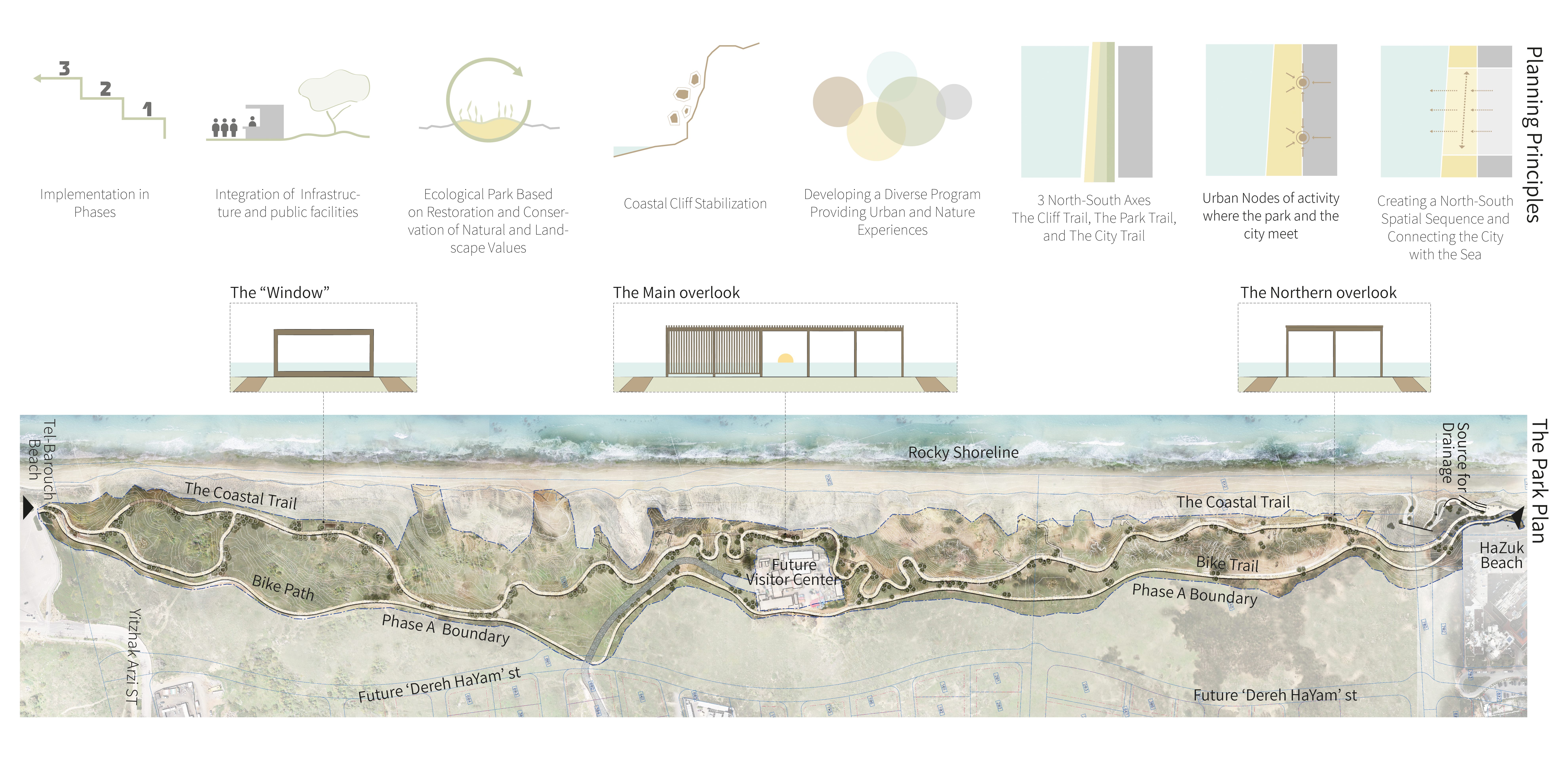

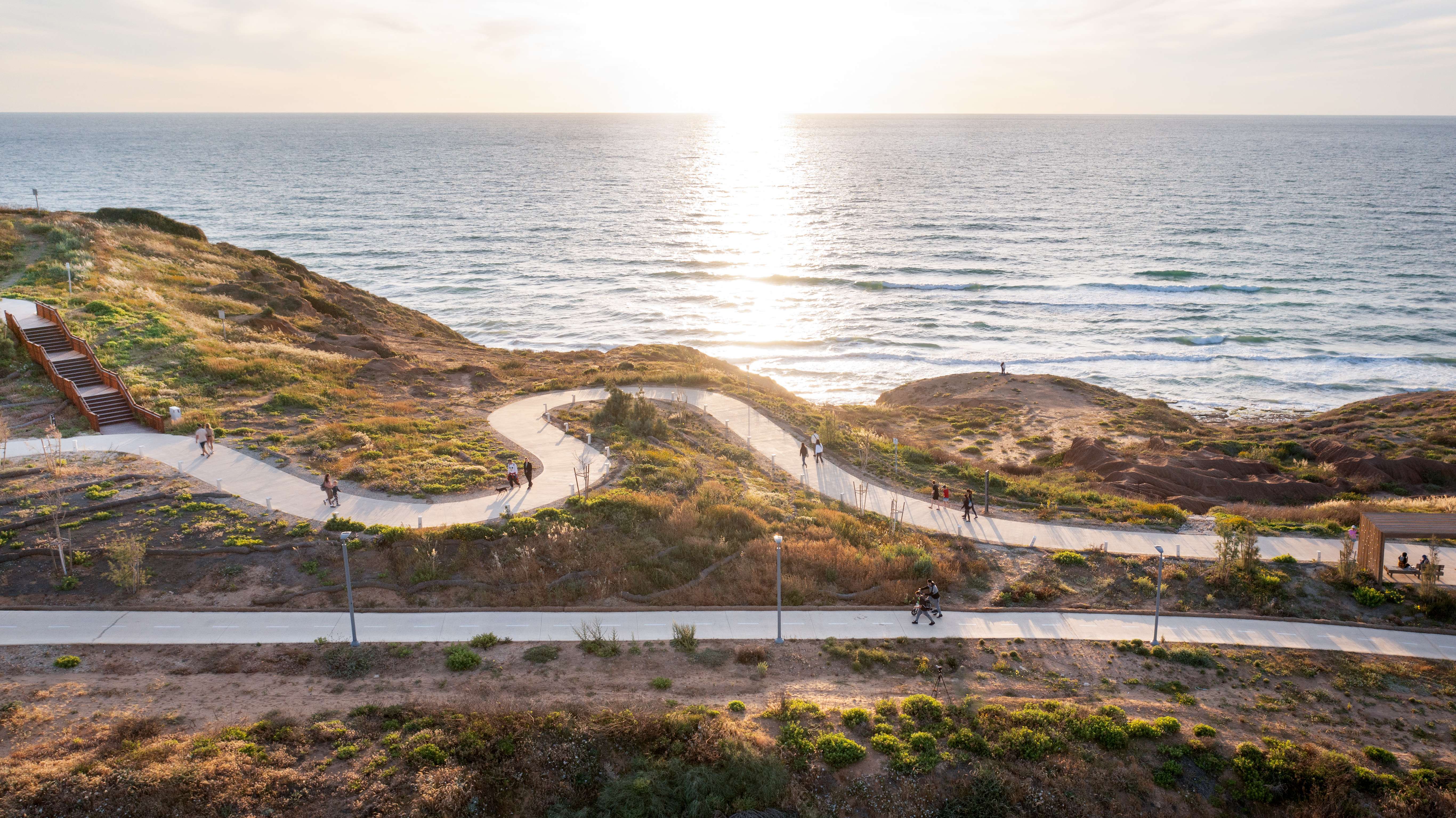
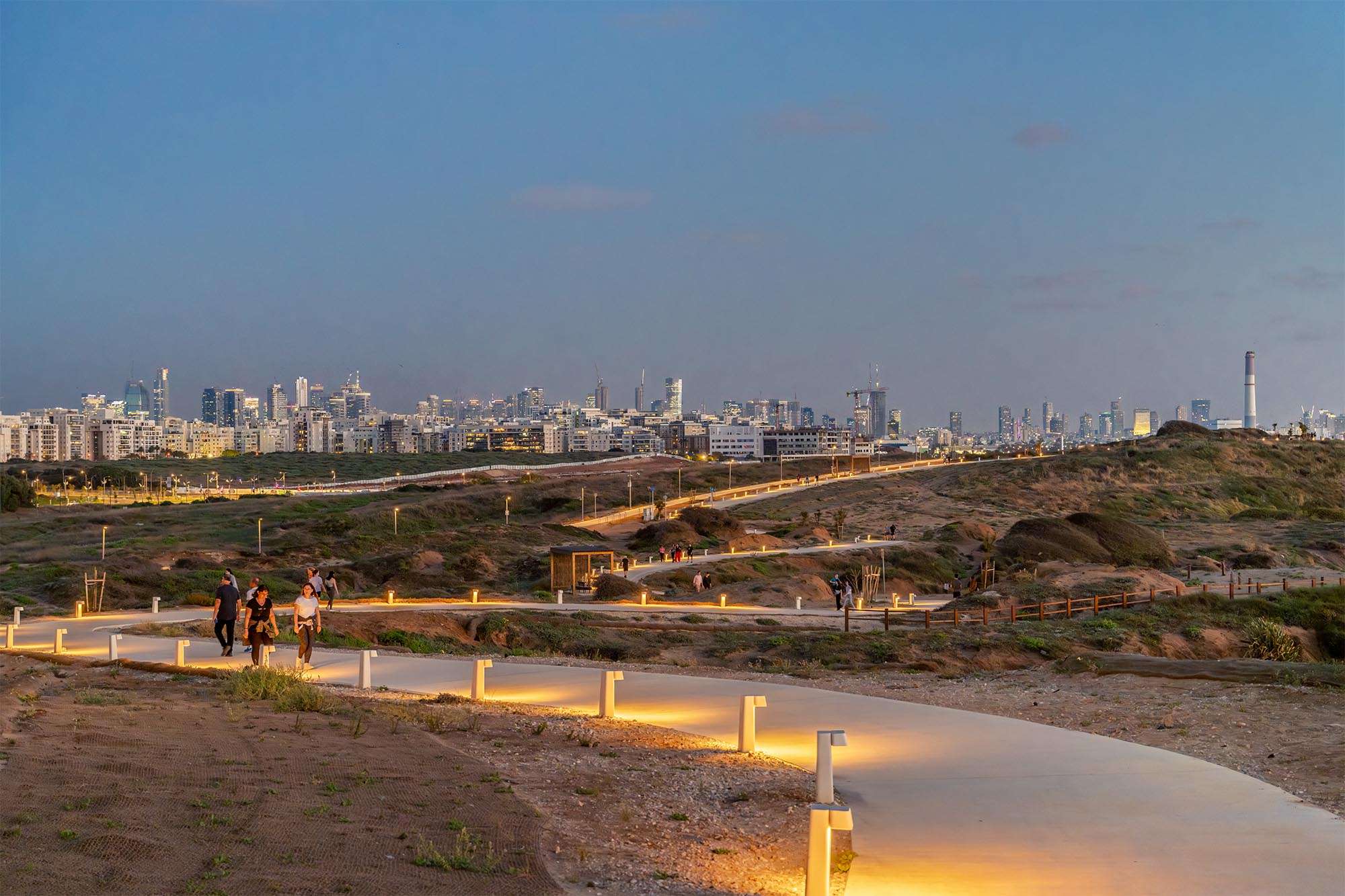
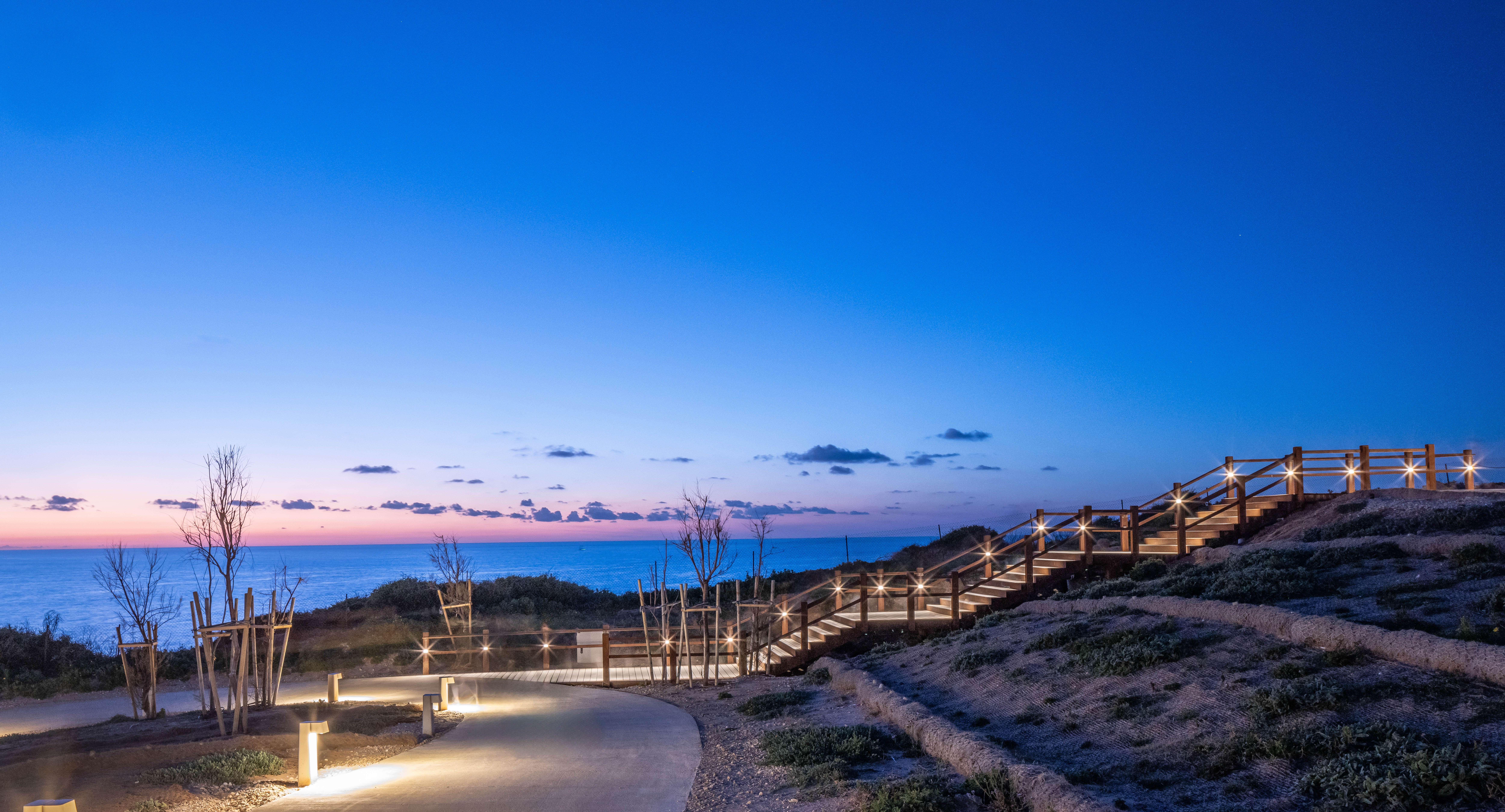
The Coastal Trail: An Ecological Park Where the City and the Sea Meet
Restoring Ecology & Regeneration in a Coastal Urban Edge
The Coastal Nature Trail is the first phase in the regeneration of Tel Aviv’s largest remaining natural coastal site. Set within a complex urban context—between dense development and fragile ecosystems—this 50-hectare site holds the last sandstone cliffs in the city and serves as a vital ecological corridor along Israel’s Mediterranean shoreline.
Amidst a public debate between the municipality, community groups, and environmental organizations, our vision for a Coastal Nature Park was selected. It centers on ecological restoration, habitat conservation, and low-impact recreation—allowing people to engage with nature while restoring and protecting the coastal ecosystem’s integrity.
The 1.8-kilometer trail completes a critical missing link in Tel Aviv’s coastal promenade and bicycle network, connecting to adjacent cities—Herzliya to the north and Bat Yam to the south—and providing continuous public access along the shoreline.
Designing for Regeneration: Low-Impact Strategies
A central challenge was balancing public accessibility with ecological preservation. The design prioritizes universal access, but does so using low-impact interventions that minimize disturbance to the natural terrain. Trails and viewing platforms are carefully sited to avoid sensitive habitats, limit grading, and follow natural contours.
Invasive species were removed, earthworks minimized, and local soils were reused and amended. Bioengineering and nature-based solutions (NbS) played a vital role: over 9,000 meters of coir logs and 25,000 sqm of coconut fiber mesh were used for erosion control and soil stabilization. These biodegradable elements blend with the landscape, reinforce slopes, and support native vegetation.
Ecological Expertise and Monitoring
A multidisciplinary team of five ecologists guided the regeneration process—surveying sensitive areas, defining protected zones, shaping the native plant palette (including numerous endemic species), and establishing long-term monitoring protocols. The Nature and Parks Authority’s urban division also took part in the design process, ensuring alignment with national conservation strategies.
Lighting & Materials: Harmonizing with Nature
Lighting was addressed with extreme care to avoid light pollution. Precast, sand-colored concrete bollards provide subtle, low-level lighting, designed using simulation software to ensure safety while protecting nocturnal wildlife.
All materials were selected for durability and ecological compatibility. Structures are built from treated, recycled wood using Japanese joinery and ceramic screws; bollards are crafted from precast concrete that visually blends into the coastal sands.
Resiliency & Climate adaptation strategies
The design anticipates the challenges of a harsh coastal climate, with constant sea spray, winds, and saline exposure. Every intervention—from plant selection to boardwalk detailing—supports long-term resilience, while maintaining a light touch that regenerates the land without overpowering it.
